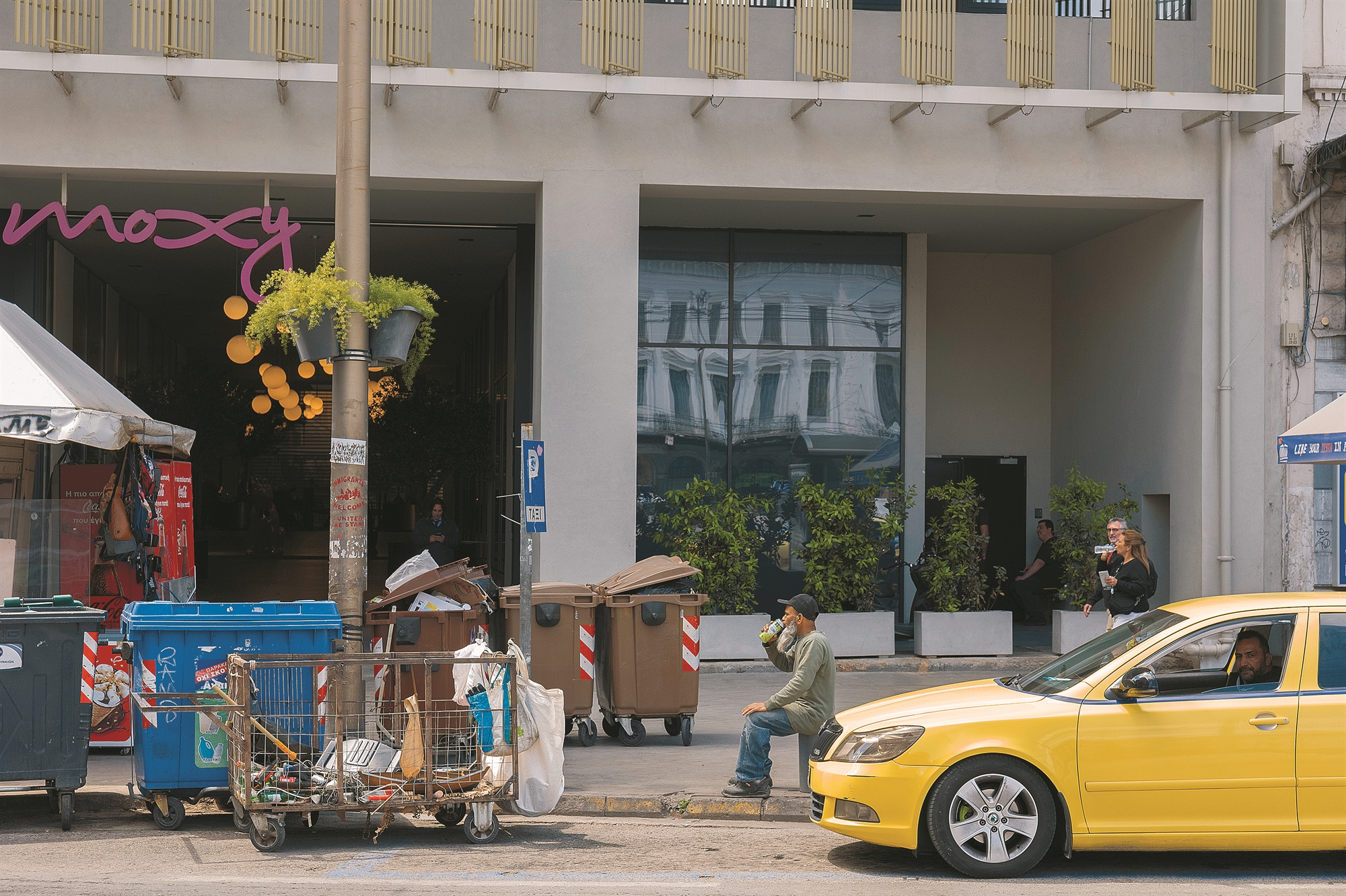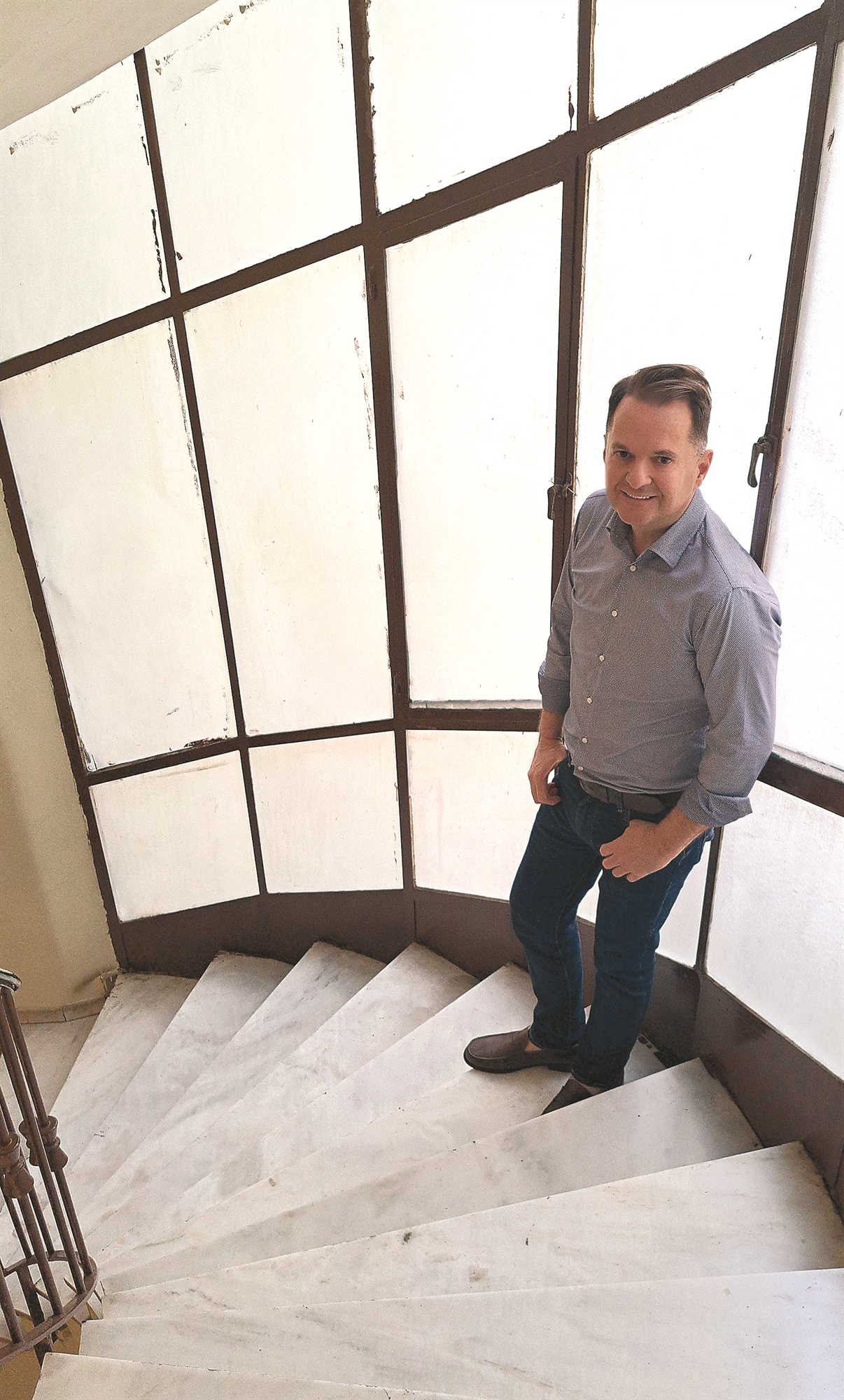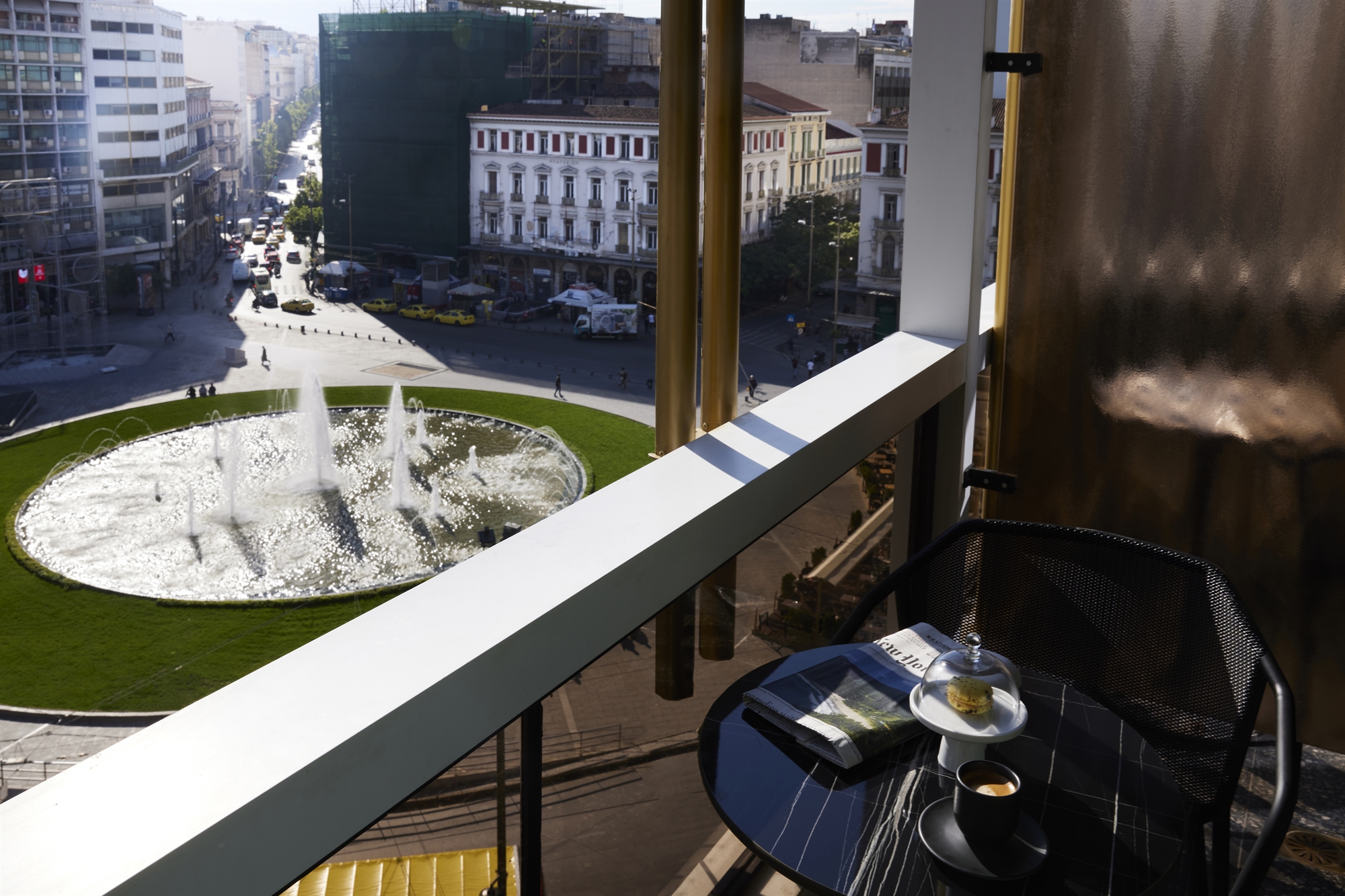Is Omonia about to become livable again?
A new generation of investors is betting big on the Greek capital, with ambitious projects in one of its least attractive locations

A middle-aged German couple walk along Tritis Septemvriou Street towards Omonia Square. Strolling nonchalantly along, they talk and laugh in an animated manner, seeming to enjoy the hot Athenian sun. If the Omonia Square fountains weren’t in the way, they’d be able to see the Acropolis. The man is carrying a backpack and an expensive-looking camera. I hear a cabbie calling out to them in an alarmed voice: “Be careful, be careful!” He gestures frantically to warn them that there are bag-snatchers and pickpockets lurking in the area. The Germans are taken aback for a moment, but they thank the taxi driver for his interest.
I am just a few meters from Omonia, on Lavriou Square, which today is nothing more than a passage flanked by dusty cafes and flashy, big-chain bakeries. A woman looking a bit too exotic and underdressed for this time of day stands on a street corner. Perhaps she’s waiting for a customer? What if I’m wrong? What if she’s not what I think? No one else seems to be paying her any mind.
Construction
Apart from the usual Athens din, the sound of jackhammers also fills the air. After years of abandonment, dozens of beleaguered buildings stand covered in scaffolding as they are put to new use. Most are being turned into hotels, but I soon come across the biggest project in the area, which is the transformation (by architect Minos Digenis) of the old Minion department store into a multipurpose complex that will contain shops, offices, restaurants, cafes and bars, but also 45 apartments that will be let on long-term leases. Work on the building has already started and what’s big about this project for Athenians is not just the revival of an iconic address, but also the decision by Dimand, the developer, to add residences to the plan. As I look at the construction site, I cannot help feeling like a witness to an important transition in the identity of the broader Omonia area. The apartments, in fact, will be built in a separate structure on the same block as the Minion building and will look out toward Omonia Square and the Acropolis, while also being sheltered from the noise of traffic on Patission Street. That side of the Minion building will be reserved for businesses. The commercial part of the project is slated for delivery in the first quarter of 2024, while the residential part is expected to be completed roughly a year later.
‘The Minion building complex will have mixed uses, because mixed uses ensure vibrancy and variety, and allow small poles of growth to develop’
The Minion building is just one example of the changes taking place in the area. Dimand, in particular, appears to be placing itself very strategically in the residential market in the hard core of downtown Athens, with plans for a string of buildings on and around Omonia. One of these is the old Damigos toy store on Apellou Street (behind the Notos homestore), while another is the listed building once occupied by Emporiki Bank on the corner of Sofokleous and Aeolou streets. And Dimand is just one of the players taking a risk here.
Two more important residential projects are also under way just a few dozen meters from the square. The first concerns the reconstruction of the old Apogevmatini newspaper’s offices on Feidiou Street and the second is the transformation of the listed Hellas Hotel at the start of Tritis Septemvriou. Both are being designed by a Thessaloniki firm, Deda & Architects.
The Minion project
When Dimand first announced its plans for the Minion building, the residential development was not a part of them. That came along the way. What was the company thinking when it decided to add a residential section to its redevelopment of the historic department store? “For Athens to become re-enlivened, become safer and more inviting, residences need to return to its center,” says Olga Itsiou, Dimand’s chief operating officer.
“The Minion building complex will have mixed uses, because mixed uses ensure vibrancy and variety, and allow small poles of growth to develop. It is also a better approach from an environmental perspective because it makes it accessible to the workplace, to restaurants, services, athletic facilities, shops etc, easier and without the need for a car,” she adds.
Has any interest been expressed in the apartments, I ask her. “We were surprised by how many people contacted us asking for more information after we announced the project,” says Itsiou. “This partly confirmed our initial thoughts on the need to bring residences back to the center and to Minion in particular. Right now we have a list of more than 100 people who are interested in buying one of the apartments.”
The size of the apartments will range from 65 sq.m. to 115 sq.m. and, given the absence of schools in the vicinity and safety concerns after nightfall, they are – for the time being at least – aimed at “young professionals, couple or singles, families with older children and empty-nesters looking to make a new start and who want to have the plethora of options the city center provides,” explains Itsiou.
“The interested parties also include many Greeks abroad who want to return to Athens and live close to where they work. And 80% of all the parties want to walk instead of using a car,” says Itsiou. “As for the matter of safety, we believe that the more the city center is developed, improved and enlivened, the safer it will become.”

‘I didn’t leave… The area is still alluring’
Architect Dimitris Ioannidis has lived in downtown Athens since 2014. His home is on Stournari Street, off Patission and just a few blocks from Omonia Square, an area that he has been intimately familiar with since his days as a student at the nearby National Technical University of Athens.
“I’d say that the worst period for this area was in 2015-2016, almost right after I decided to move to the city center. The crisis led to frequent protest rallies, especially around the former Athens Polytechnic, with Molotov cocktails and fires in the streets. It was a weekly phenomenon, almost a ritual, and it made life for the area’s residents a proper hell. That, in combination with the rampant drug trade and use, brought me to despair; I’d often have to step over people’s bodies just to get into the building. The police could not or did not want to do anything,” he says.
“The situation has changed a lot in recent years, though drugs are still everywhere on the streets of Exarchia, Vathis Square and Omonia,” he adds.

Why does he insist on living in an area that does not have the vibe and certainly not the amenities of a more settled neighborhood? “Because the area is still alluring, multicultural and close to everything. I literally walk everywhere I need to go in the center and keep my car parked in a closed lot. If there is one thing I wish for, it’s more restaurants, cafes and bars, and ones that will stay open late. Right now, the area is dead after 6 p.m., which is nothing like other parts of the city center,” says Ioannidis.
How does he view the interest being shown by investors in developing housing in the Omonia area?
‘I would also expect the Athens municipal authority to do more about looking after the public spaces’
“What I have observed is a massive leap in hotels, which are mushrooming everywhere, in buildings that were run-down and empty. It’s a good sign and a good development for the area, but I hope they can meet the cost of their investment as the competition will be fierce and the market is starting to become saturated. I would also expect the Athens municipal authority to do more about looking after the public spaces, the sidewalks and the pedestrian crossings, and more for cleanliness,” he comments.
In terms of the Minion development, “it is a new concept, similar to what we see abroad, but quite bold for this specific part of Athens.”
“We look forward to the result, but it is obviously preferable for this neglected shell of a building with such strong symbolism for Athens to go back into business with multiple uses, commercial and residential,” adds Ioannidis.
‘An adventure’
Would the architect advise a young person or couple to take the plunge and move to downtown Athens?
“That’s a tough question because one of the area’s biggest advantages, that of low rents, no longer seems to be the case. Rents have skyrocketed, even in buildings that are not well looked after, have no proper basement storage, nor, of course, parking. So, for a single person or a young couple that wants to experience the ‘adventure’ of life in this area, I’d say, ‘Go for it.’ But for families with children or older couples, it would be quite difficult. That said, I’ve seen a lot of young people, mostly tourists, staying at short-term rental units, who really appear to enjoy the area. Despite all of its problems, it is quite alluring.”






